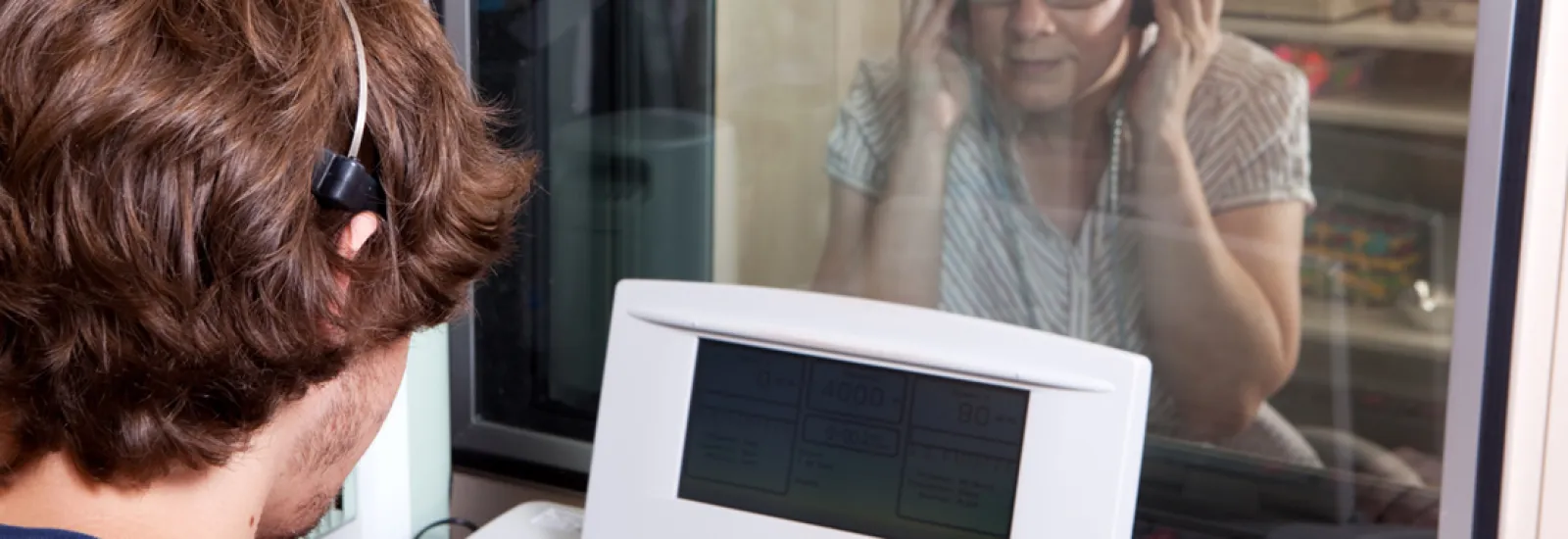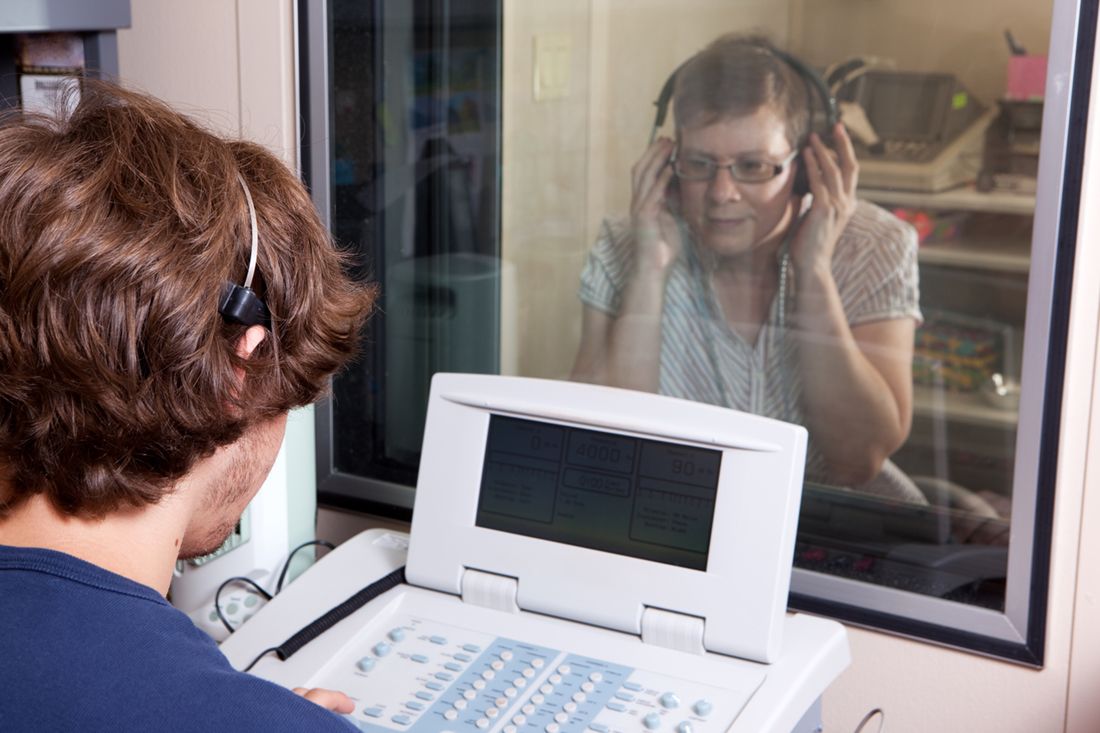
8 diagnostic hearing tests you should know about
Do you regularly need to ask people to repeat what they're saying? Or do you find yourself frequently shouting at a loved one because they can't hear you when you speak at a normal volume?
You may not always notice it, but you likely encounter someone on a daily basis who has difficultly hearing. An estimated 48 million Americans suffer from a significant hearing loss.
Signs of hearing loss in both adults and children include lack of attention, failure to respond to questions, and discomfort in the ears. Hearing loss can have a negative impact on quality of life, resulting in communication delays in young children and even social isolation and depression in adults.
In order to properly hear, the outer ear, middle ear, inner ear, and neurological pathways in the brain all have to be working correctly. The causes of hearing loss are varied, ranging from diseases and trauma to genetics and aging. If you or someone you love suspects hearing loss, a diagnostic hearing evaluation can quickly and painlessly determine if each part of the ear is properly working.
Here are eight different hearing tests that can identify loss and where in the ear it may be occurring.
1. Auditory Brainstem Response: The Auditory Brainstem Response (ABR) identifies if the inner ear and brain pathways are working correctly. To conduct an ABR, electrodes are placed on the skin around the patient's head and connected to a computer. The computer will measure brain wave activity in response to sounds played to the patient through earphones. For this test, you simply have to sit quietly-you can even be asleep while it is conducted. This test typically is performed on infants, children under age 2, or patients who are unable to respond to typical audiometric testing.

Hearing tests can
identify loss and where in the ear it may be occurring
2. Otoacoustic Emissions: The Otoacoustic Emissions (OAE) test determines how well the inner ear is working. The inner ear has tiny hair cells within it that vibrate in the presence of sound, in turn giving off noise of their own called otoacoustic emissions. A small earphone is placed in your ear to detect otoacoustic emissions in the middle ear. An OAE can determine if the inner ear is properly functioning and also if there is a blockage in the middle or outer ear.
3. Tympanometry: A tympanometry test determines how well the ear drums (which are located in the middle ear) move. To complete a tympanometry test, a small probe is placed in the ear, and the audiologist administers small puffs of air through this piece. The probe is hooked up to a computer, which measures how well the eardrum moves in response to the air. A tympanometry test shows if there is fluid in the ear, an ear infection, a hole in the ear drum, or wax in the ear canal.
4. Visual Reinforcement Audiometry: Visual Reinforcement Audiometry is a diagnostic hearing test commonly used for infants and young children. The baby or child will be placed in a sound booth with a parent. An audiologist will play sounds from speakers located in different parts of the room. The audiologist will change the volume, frequency, and location of the sounds then monitor and record the child's response to each change.
5. Conditioned Play Audiometry: Conditioned Play Audiometry is typically used as a diagnostic hearing tool for children two-to-four years old. The child is usually given a toy and asked to complete a task with the toy whenever they hear a sound. The audiologist controls the volume and frequency of the sound and observes and records the child's responses.
6. Pure Tone Air and Bone Conduction Audiometry: Pure Tone Air and Bone Conduction Audiometry is a test in which the patient sits in a sound-treated booth, wearing either headphones or insert earphones. They listen to a sound and inform the audiologist when they hear this tone. The audiologist is able to change the frequency and intensity of each stimulus presented. Pure tone air conduction tests the patient's hearing by going through the outer, middle and inner ear. Pure tone bone conduction is when a bone oscillator is placed on the mastoid portion of the ear. This part of the test will bypass the outer and middle ear, while looking at the inner ear. The test allows the audiologist to separate the portions of the ear and determine if a problem exists in either the middle or outer ear.
7. Hearing aid evaluations: People with hearing aids should have them regularly checked, since hearing can change over time. Reid Health offers hearing aid evaluations for all ages to ensure hearing aids are operating at optimal levels.
8. Real Ear Verification: Real Ear Verification is part of the hearing aid fitting process at Reid Health, and it is crucial to ensuring a hearing aid is set to address each patient's exact hearing needs. After examining a patient's ear with an otoscope, the audiologist will insert a small tube into the ear and then place the hearing aid in. Next, the audiologist will play sounds within the room, and the tube in the patient's ear will measure the amplification of the hearing aid. This is considered the gold standard in hearing aid fittings, although only approximately 40% of audiologists use this test.
If your hearing isn't what it used to be, don't wait in question, or let it interfere with your life any longer. Request an appointment online or call (765) 935-4477 to schedule an appointment at The Reid Hearing Center today.

